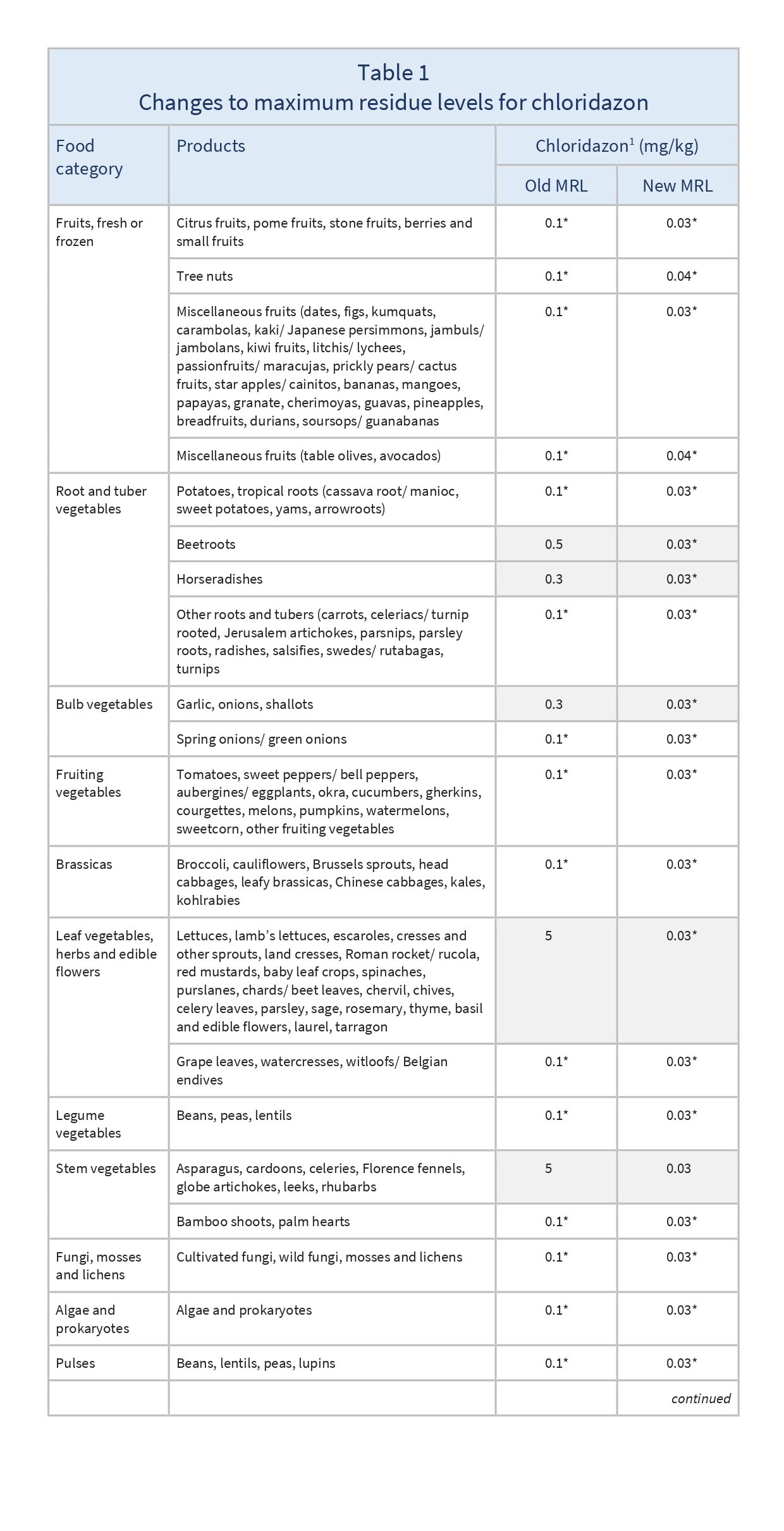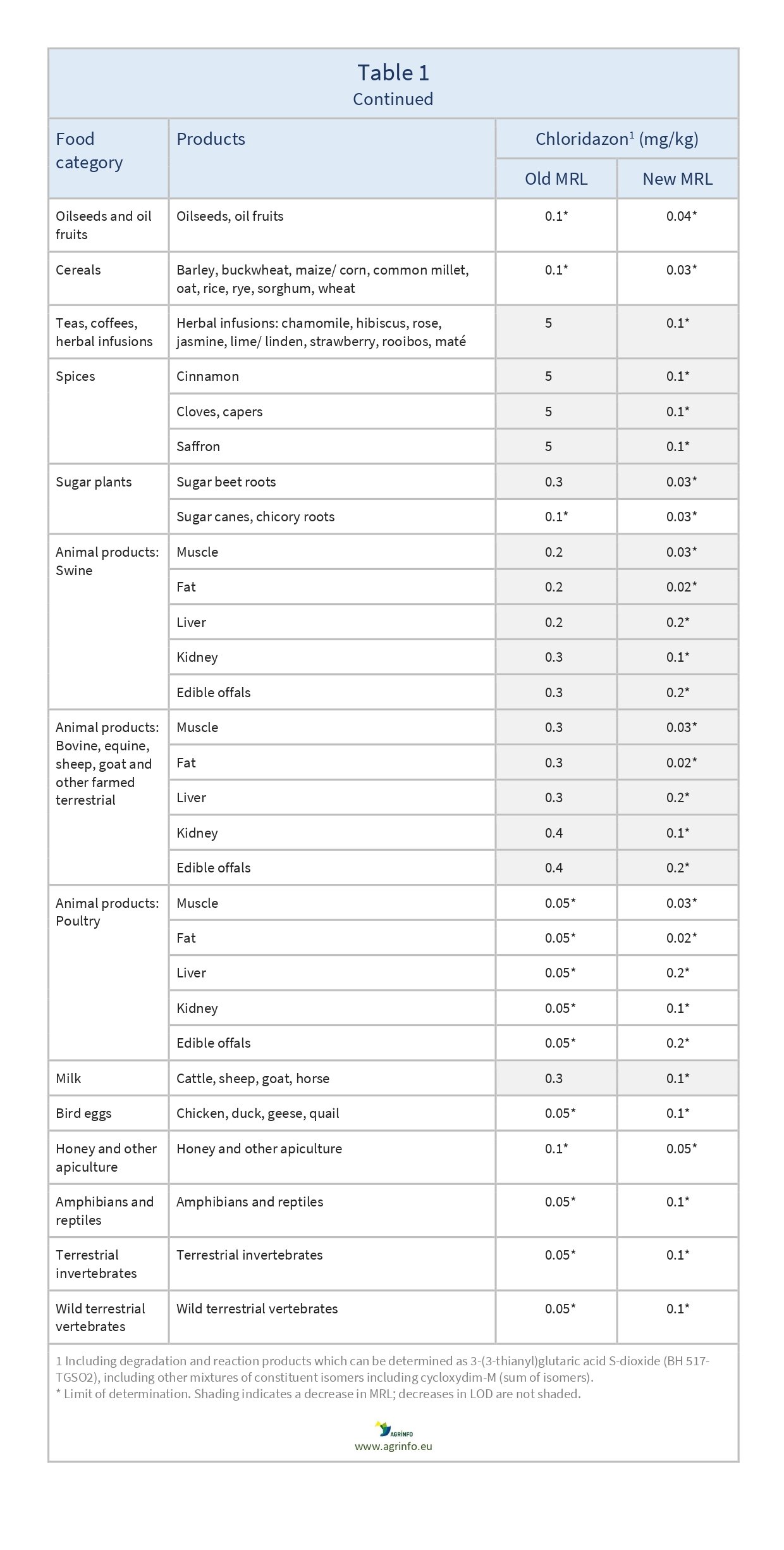Maximum residue levels for chloridazon
- Pesticide MRLs
Summary
The European Commission has reduced the MRLs for chloridazon on all products to the limit of determination (LOD, the lowest level that can be detected using the most modern and reliable analytical methods). For many products, the LOD will be significantly decreased.
The changes will affect beetroots, horseradishes, garlic, onions, shallots, leaf vegetables, herbs and edible flowers, stem vegetables, herbal infusions, bark spices, bud spices, sugar beet roots and animal products.
EU reduces MRLs for chloridazon to the limit of determination on all products
Commission Regulation (EU) 2023/710 of 30 March 2023 amending Annexes II, III and V to Regulation (EC) No 396/2005 of the European Parliament and of the Council as regards maximum residue levels for bromopropylate, chloridazon, fenpropimorph, imazaquin and tralkoxydim in or on certain products
Update
The European Commission has reduced the MRLs for chloridazon on all products to the limit of determination (LOD, the lowest level that can be detected using the most modern and reliable analytical methods). For many products, the LOD will be significantly decreased.
The changes will affect beetroots, horseradishes, garlic, onions, shallots, leaf vegetables, herbs and edible flowers, stem vegetables, herbal infusions, bark spices, bud spices, sugar beet roots and animal products.
Impacted Products
chamomile, hibiscus, rose, jasmine, lime, linden, strawberry, rooibos, maté, cinnamon, cloves, capers, saffron, sugar beet roots, sugar canes, chicory roots, lettuces, lamb’s lettuces, escaroles, cresses, sprouts, land cresses, Roman rocket, rucola, red mustards, baby leaf crops, spinaches, purslanes, chards, beet leaves, chervil, chives, celery leaves, parsley, sage, rosemary, thyme, basil and edible flowers, laurel, tarragon, asparagus, cardoons, celeries, Florence fennels, globe artichoke, leeks, rhubarbs, animal products
What is changing?
The MRLs and LODs for chloridazon have changed as set out in Table 1.
Why?
Chloridazon is no longer permitted for use in the EU. The existing MRLs set out for chloridazon have therefore been deleted.
Timeline
The new MRLs will apply from 21 October 2023.
Recommended Actions
Suppliers to the EU markets of beetroots, horseradishes, garlic, onions, shallots, lettuces, herbs, asparagus, cardoons, celeries, Florence fennels, globe artichoke, leeks, rhubarb, cinnamon, cloves, capers, saffron, sugar beet roots and animal products currently using chloridazon check that any use of this substance does not result in residues. Where use results in residues, suppliers should seek alternative solutions to chloridazon.
Background
MRLs are set in accordance with the rules set out in Regulation 396/2005. For information on current MRLs for other substances, please consult the EU Pesticide Residues database.
Sources
Commission Regulation (EU) 2023/710
Tables & Figures
Disclaimer: Under no circumstances shall COLEAD be liable for any loss, damage, liability or expense incurred or suffered that is claimed to have resulted from the use of information available on this website or any link to external sites. The use of the website is at the user’s sole risk and responsibility. This information platform was created and maintained with the financial support of the European Union. Its contents do not, however, reflect the views of the European Union.


